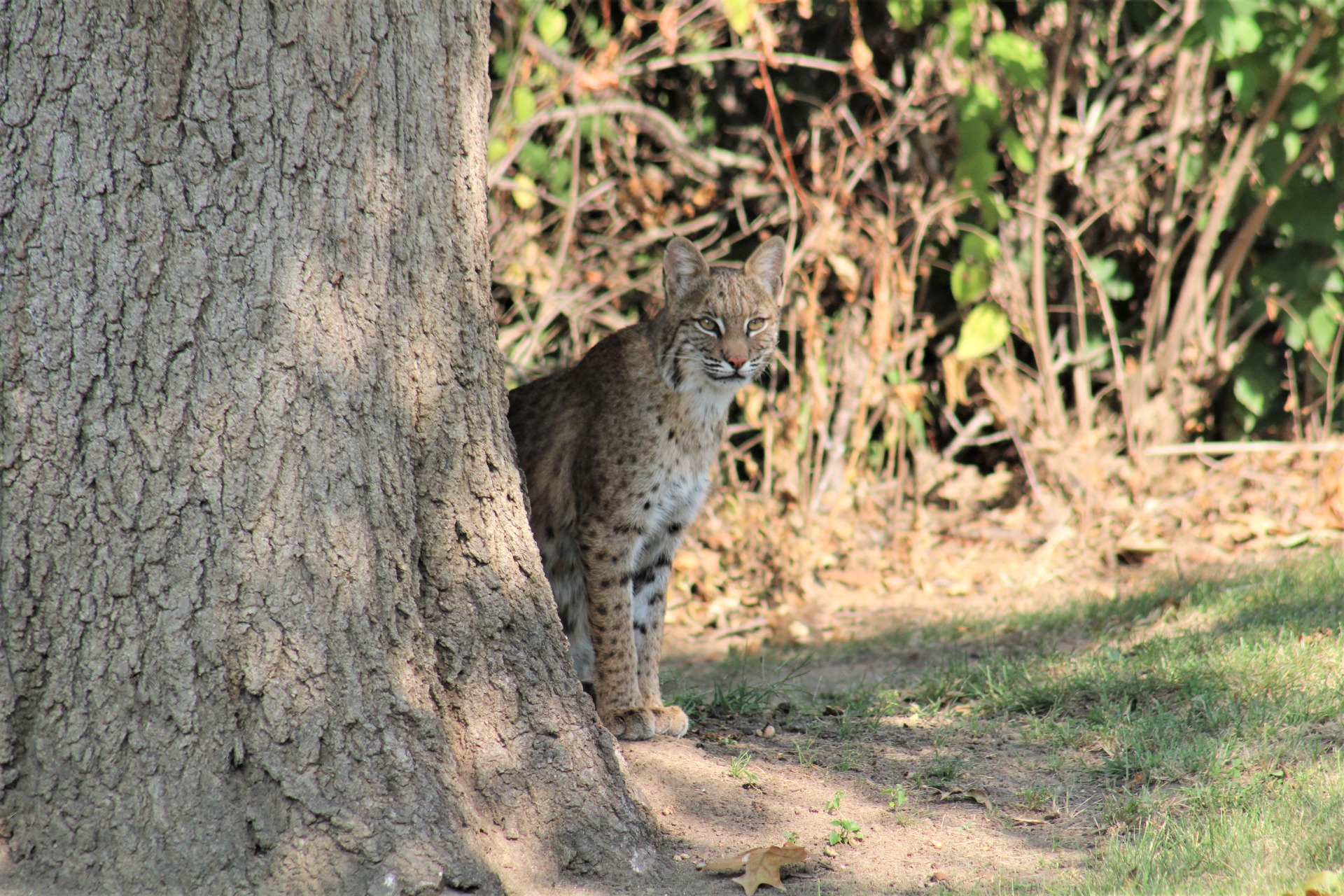Camouflage
Marla Mertz, Marion County Conservation
Most animals of the world have some type of camouflage that helps them survive in their surroundings. The environment that an animal lives in is often the most important factor to what the camouflage looks like and how well it is used for them to survive.
Camouflage varies from animal to animal and depends greatly on the behaviors an animal has and how its body functions in their surroundings. An animal that spends a majority of its time in the woodlands is not going to have markings like a fish. Shape, dull colors, bright colors, patterns, false faces, false eyes are all things to look at closely. The type of camouflage tells a story of where they live and how well they get along in their surroundings through predator/prey relationships.
Food for thought! Let’s learn about different examples of camouflage.
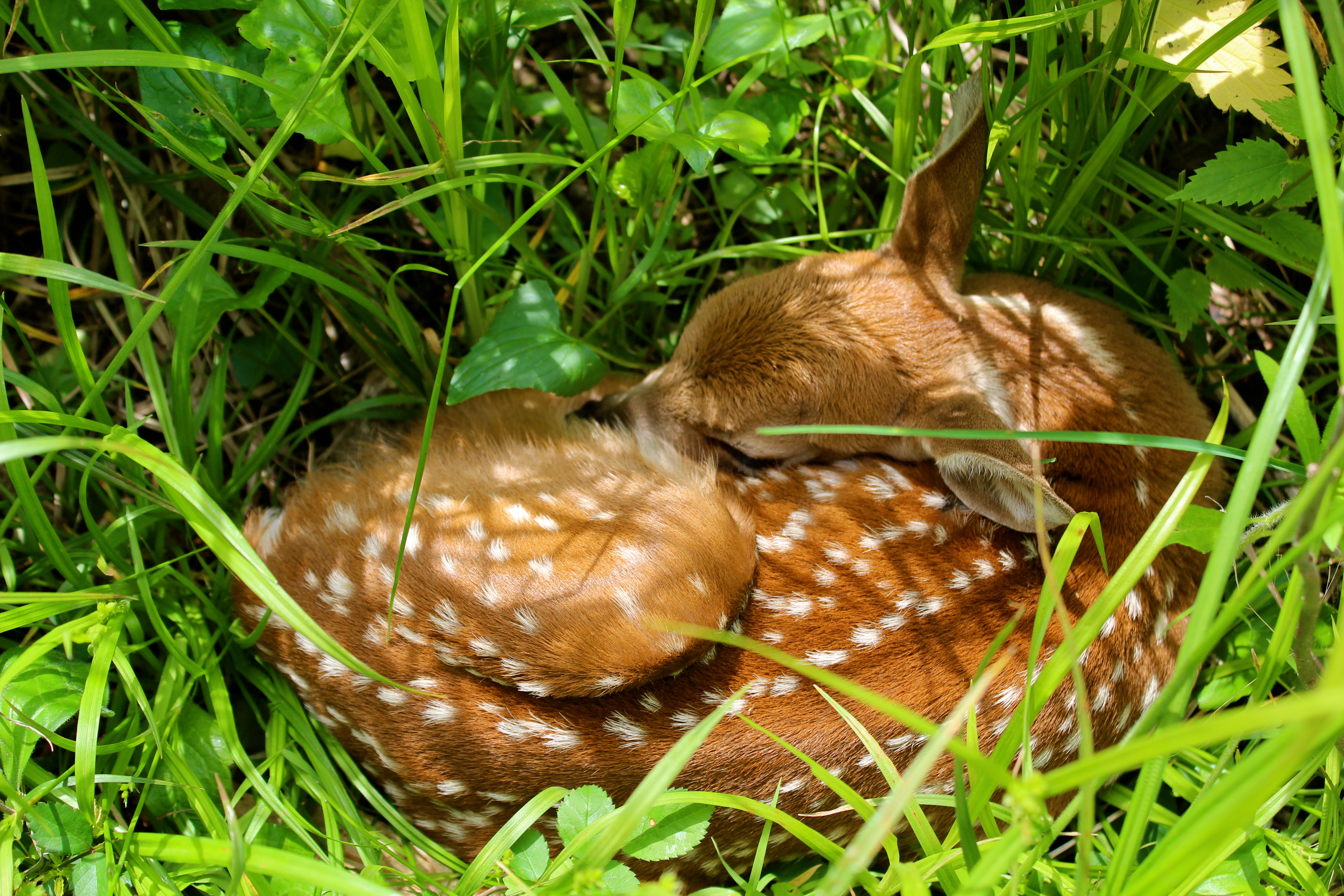
A white-tailed deer blends in with its surroundings. The earth tone colors and seasonal changes of the hair provide the deer a better chance of surviving than one that is almost “white” in color. Have you ever wondered why the fawn has white spots when it is born? Female deer (does) are always on the lookout for predators. They travel within their known area for grazing, getting water, and all the nourishment needed to provide the fawn with her milk. The doe is always ready to wave the white flag under the tail to warn of predators or danger. Fawns are unable to run and keep up with their mother, so she chooses a place to bed down her young, where they may have to “stay put” for hours. The young fawns are born with no scent, and the white spots appear as the sun dappling onto the ground, breaking up any outline. This camouflage technique helps them stay safe from predators.
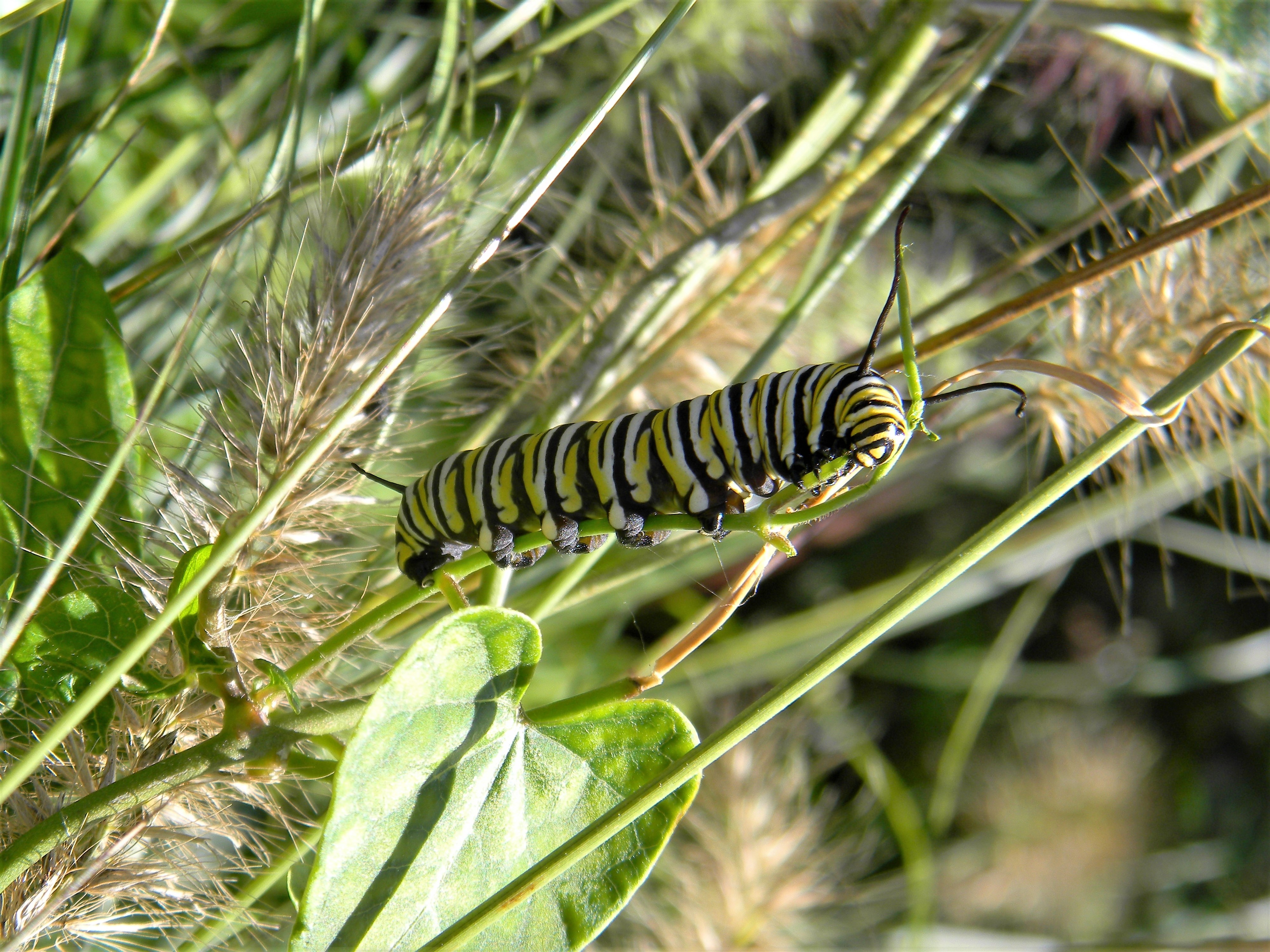
The caterpillar (larvae) stage of the monarch butterfly feeds exclusively on different types of milkweeds. Most milkweeds contain a toxin that can make animals ill and/or make them vomit. Most plant-eating animals avoid munching on milkweed, so the larval stage is usually safe. But as the caterpillar becomes the brilliant orange butterfly, the toxins are still stored in their wings and exoskeleton. Seems as though predators avoid monarchs because they have learned from previous experience that they taste YUCKY! The viceroy butterfly looks very similar to the monarch, and is believed that the mimicry of color helps them to survive. Have the animals learned that the bright orange and black color is a “warning?” The monarch is below left and the viceroy is below right.
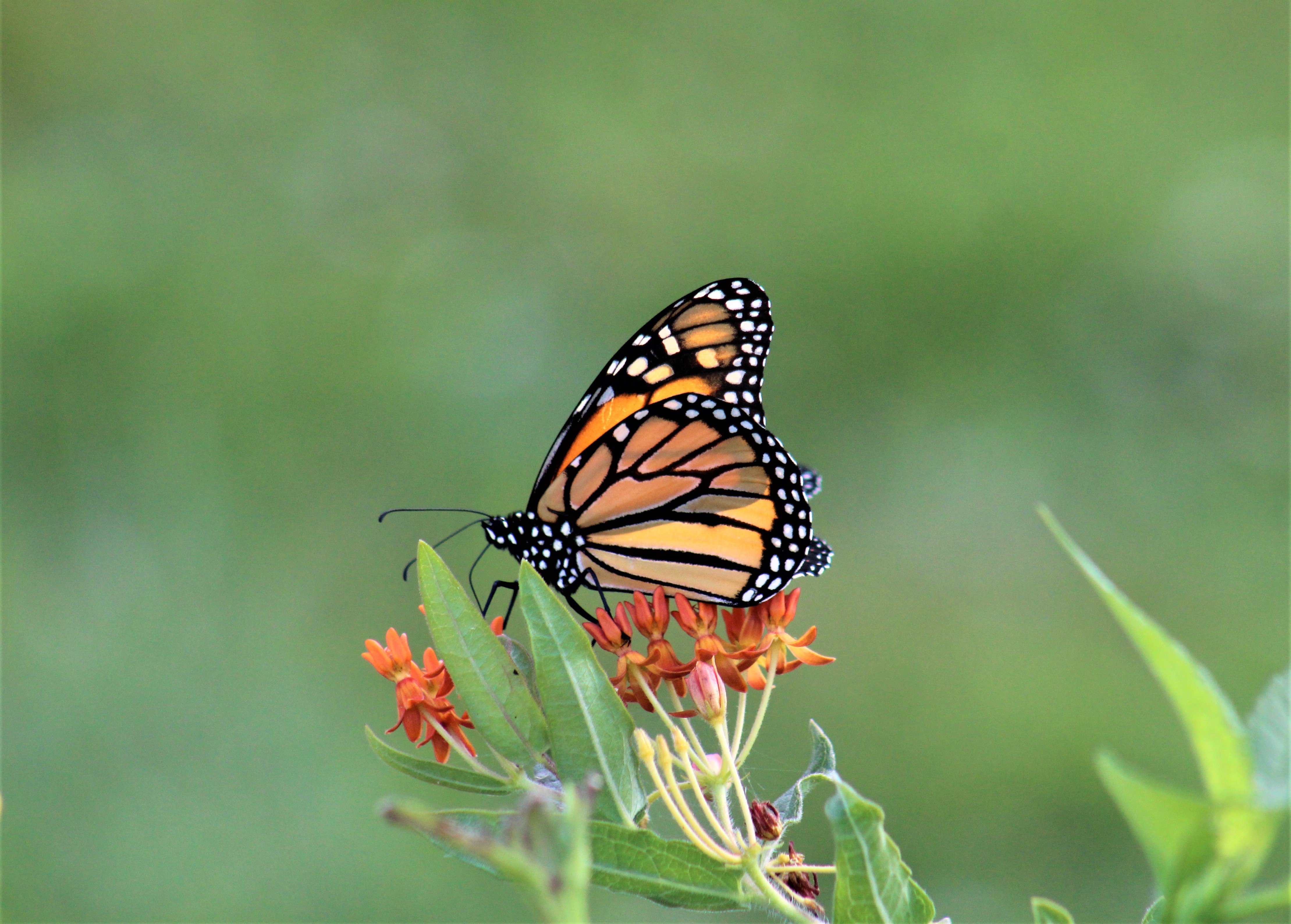

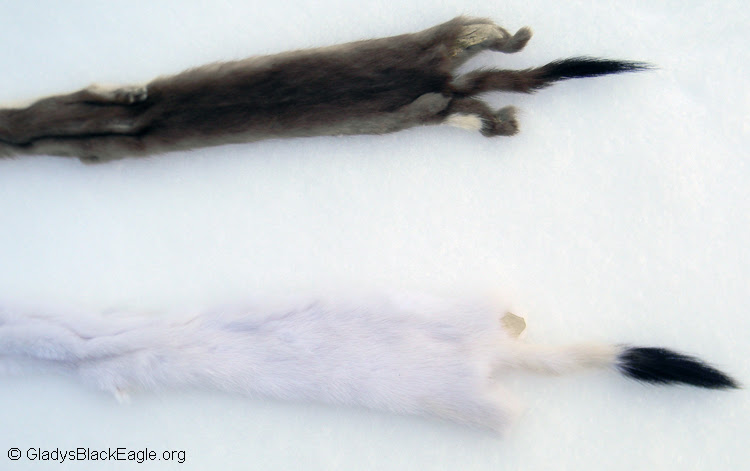
Short-tailed weasels, sometimes called ermine, blend in with brown, earthy tones in the summer, but begin a color change in the fall to a dull white and gray color going down the back. In winter, the color of the coat turns white. Both seasonal coloration have their black-tipped tail. These little 3-5 ounce weasels are fierce predators and excellent mousers. Their small size and brown-in-summer, white-in-winter camouflage helps them to kill their prey and to avoid being prey from hawks, owls, mink and other animals. Some other types of animals that use concealing coloration would be the Arctic fox and the Arctic hare.

The bobcat is a woodland and edge animal and named for its “bobbed” tail. They have a stubby tail, spiky ear hair, and tufts of long hair on the side of their face. The fur of the bobcat has an earthy tone to orangish in color. There are stripes on the face and different size spots that cover the body. The chest is mostly white, but their belly is heavily spotted. It is the spots that camouflage the bobcat in thick, brushy areas. Bobcats can travel many miles a day, are rarely spotted by humans because they are so elusive. Bobcats are also excellent mousers. Their diet can be prey that are much bigger than they are, but they mostly eat mice, rabbits, birds, squirrels, and small game. Some other types of animals that use disruptive coloration would be the zebra, leopard, and tigers.
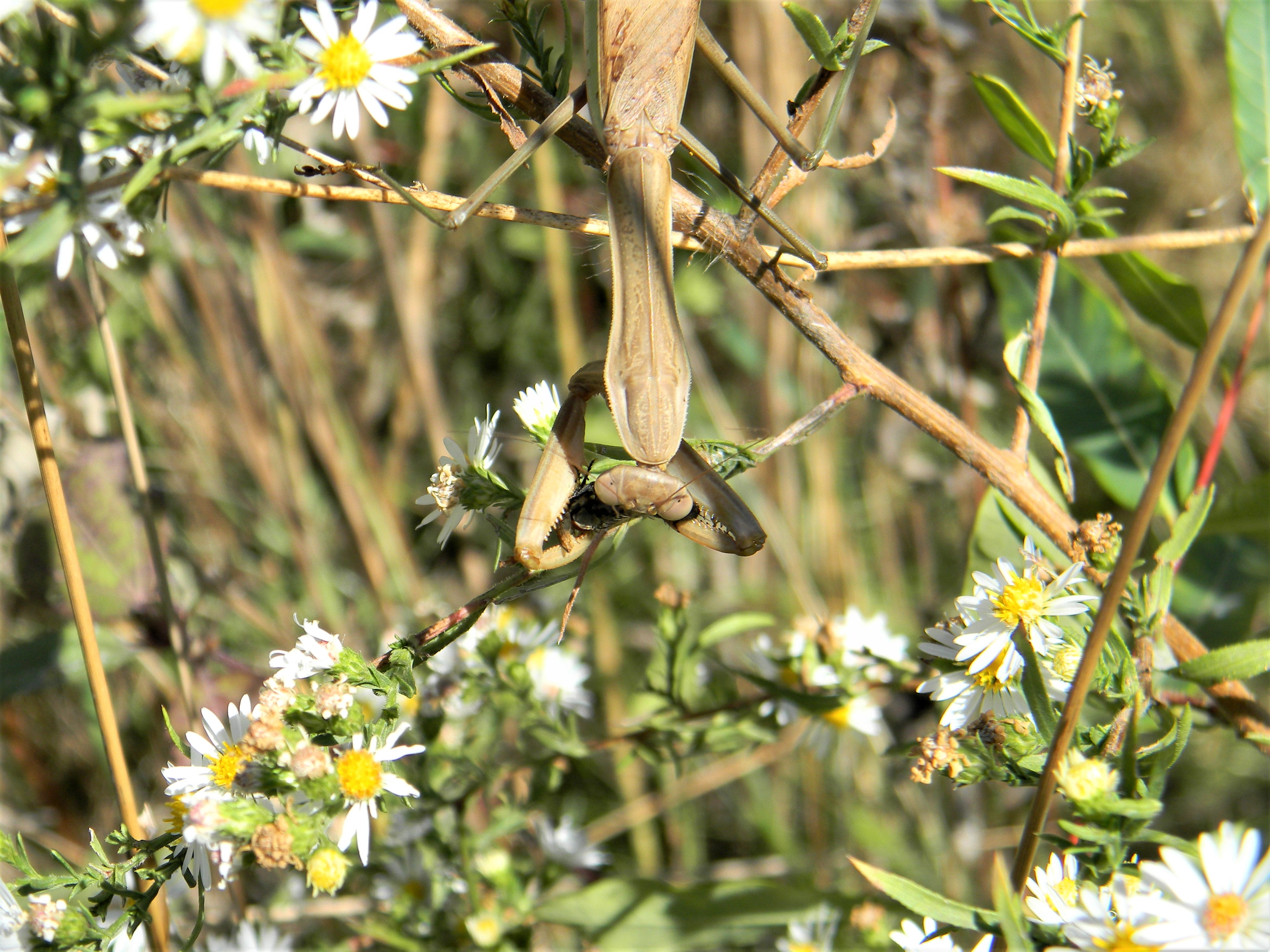
Have you ever pretended to be something that you are not? Maybe you put on a pig costume for Halloween, or dressed up as bat! Maybe you were Spiderman! Some animals that camouflage themselves pretend to look like something else in their environment, maybe a leaf, an owl, a stick, bark on a tree. They are some of the most fun animals to discover when you are out and about on a hike. Several moth and butterfly species have beautiful coloration with large eyespots that resemble predators. The praying mantis is part stick and part leaf, and of course the amazing walking sticks are always a challenge! The many insects and animals that pretend to be something else may give them a second chance at avoiding a predator’s mouth.
- Check out National Geographic Kids
- Explore PBS.org parents website and search animal camouflage for activities and videos
Now that you've got a handle on the ways animals use camouflage for protection or stealth... look at this photo album and decide what type of camouflage each animal is using. No answers provided... as many animals use more than one type of camouflage (hint, hint)!
View the "Camouflage" album in Google Photos.
Activity ideas!
Environmental educators in your area will have activity ideas that you can use in a classroom or at home involving camouflage. There are numerous household and crafty items that can enhance a camouflage activity without expense. Teacher resources, such as, Project Learning Tree, Iowa WILD, Project Aquatic WILD, Neil Smith National Wildlife Refuge and Prairie Learning Center curriculum, and others have activities that can be adapted to your area. There are environmental educators and natural resource departments somewhere close to you!
Vocabulary words are essential to breakdown the different types of camouflage. Depending on your age group, there might be two or three new words introduced. Camouflage is described as “protective coloration” to living organisms. Disguise or costume; blending; concealing coloration; disruptive coloration; mimicry, and pretenders. The understanding of their surroundings and the habitat that is near you is also important.
The objective of these activities is to describe the value of protective coloration to living organisms.
Birds ‘n’ Worms (Adapted from Project Learning Tree)
Introduce the meaning of the word “camouflage” and protective coloration.” Obtain colored pipe cleaners. Cut each cleaner into three pieces. Twist or bend these into “worms.” Scatter a known number of pipe cleaner “worms” of each color over an area on the playground, in the grass, on the parking lot, or on bare soil.
Give each student the name of a bird to impersonate, such as robin, meadowlark, bluebird, crow, and flicker. Then, one at a time, call out the names of these birds. As each species is called, the student representing the species can “fly” out over the area where the “worms” were scattered and pick up the first worm which catches the “birds” eye. As students return from their flights, ask them to lay out on a large piece of white butcher paper their worms in the order picked up. Repeat this process until all the students have made at least one “flight” returning with the first worm they see.
Ask the students to consider the color sequence of the “worms” captured and placed on the paper. Discuss any trends or patterns that occur. Which were the easiest to locate?
Would it be better to play this activity in longer grass, rather than a flat surface? Discuss the relationship between coloration and the usual habitat of the worms. Can they think of similar relationships for other animals? Can you use these findings in a math project? Graphing?
Maybe you can work this activity into the classroom using paper hole-punch circles of different colors, or cut small strips of colored paper and scatter the “worms” around the classroom. If you are in a controlled area and know you will find all of the “worms,” colored toothpicks have been used. But they are not the best to leave in your yard area.
Once students learn how the activity works, can they predict what colors would be found first?
The Thicket Game (Project WILD) is a really fun camouflage activity.
It is similar to hide and seek and can be adapted to any habitat that may be near you. Click here for the Thicket Game instructions.
You can make it as easy or challenging as you wish! Kids always have great ideas. Here are a few ideas that may help you come up with your own classroom or home experience.
To approach an activity using technology - have students take pictures of things around them and create a classroom mural. Put involvement with the technology.
Have students take crafty items such as paper, buttons, ribbons, leaves, scrap material, colors, etc. and have them design/invent an animal of their own creation, naming it, considering the type of behavior the animal has, and noting specific areas of camouflage that would assist them to survive into the habitat they have chosen. They can make it, display it, talk about it in class or write about it or hide them outside for the class to search and collect. When students create their own story of their creature, the habitat it lives and what camouflage it uses to survive in the area chosen, the excitement flows!
published Monday, January 2, 2023

